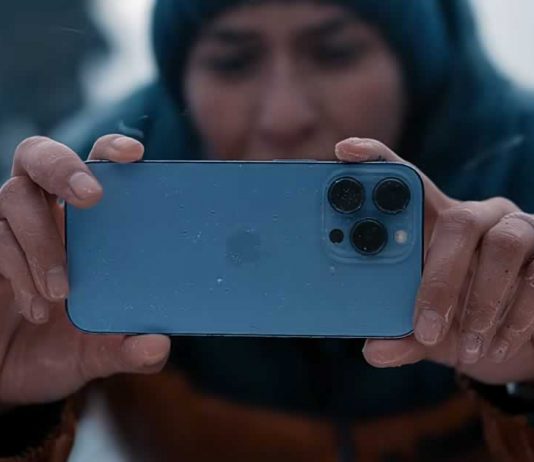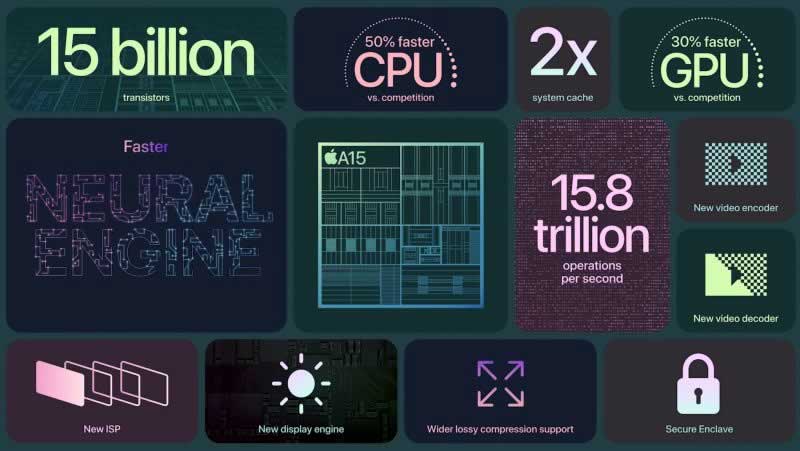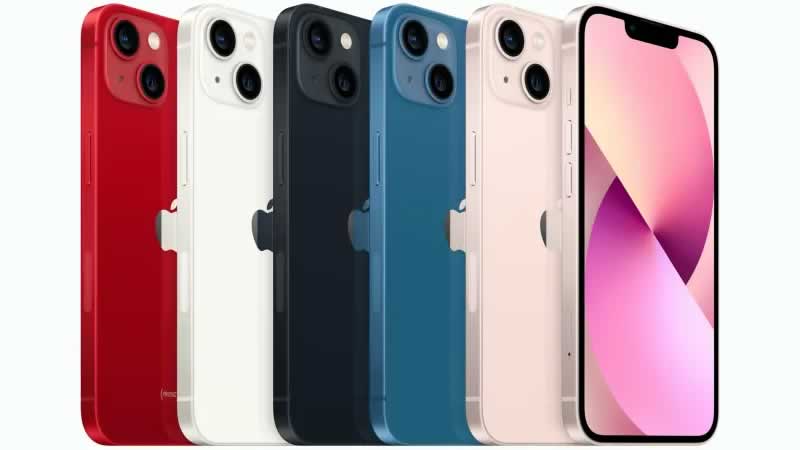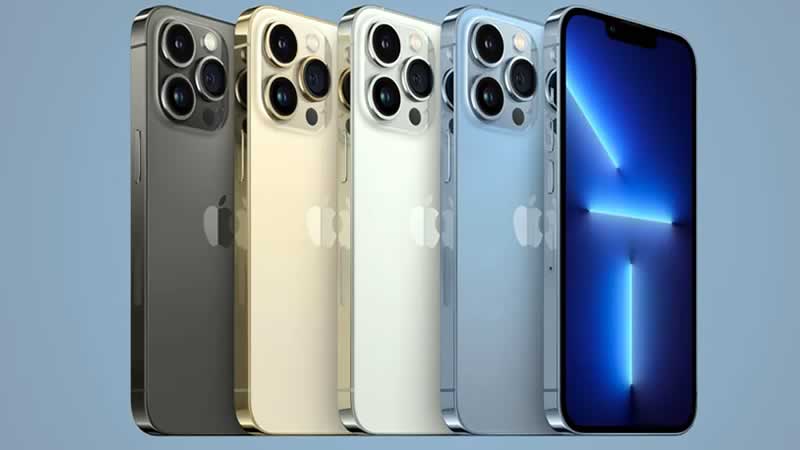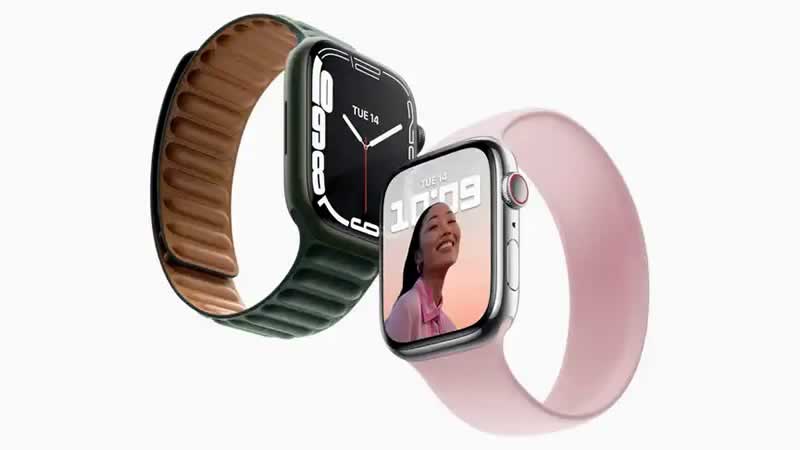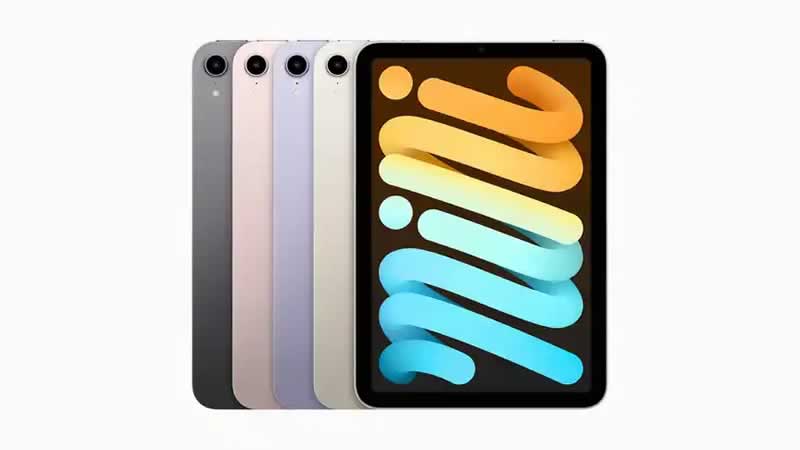Apple has presented the new generation of smartphones, tablets and smart watch — here comes the new iPhone 13, Apple Watch Series 7, ninth-generation iPad and totally revamped iPad mini.
The new iPhone 13 series will be launched on the market in the four well-known sizes: iPhone 13 mini, iPhone 13, iPhone 13 Pro and iPhone 13 Pro Max. What the smartphones have in common are smaller Face ID notches, the A15 Bionic, iOS 15, new cameras and larger batteries. The Pro models come with ProMotion for up to 120 Hz. Although, iPhone 13 maintain the design of the previous generation and the differences are subtle in appearance.
Contents
Apple A15 Bionic chip
The four models have inside the new Apple A15 Bionic chip. A true beast that once again puts Apple at the forefront in terms of processing and mobile performance. It uses five-nanometer technology and has nearly 15 billion transistors to handle the most demanding tasks, including the latest computer photography capabilities.
The SoC is equipped with a total of six CPU cores, two of which are performance cores and four are efficiency cores. Apple states a lead of 50 percent in the area of CPU performance compared to the fastest chip in the competition. Apple’s latest GPU has four cores and is said to be 30 percent faster than the best chip in the competition — five GPU cores are active in the Pro models and in the new iPad mini.
The A15 Bionic also has a new image processor that enables features such as the new cinema mode for video recordings with a shallow depth of field. In this mode, the smartphone supports intelligent focus shifting, for example, from the foreground to the background and vice versa. In addition, the A15 Bionic has a new video encoder/decoder.
iPhone 13 and iPhone 13 Mini
Apple has slightly adjusted the layout of the cameras in the iPhone 13 mini and iPhone 13, both of which still have a dual-camera system but which are arranged diagonally opposite one another instead of vertically on one axis.
In terms of size, the screen measurements and OLED (Super Retina XDR) technology that we saw with the iPhone 12 are preserved. That is 6.1 inches for the iPhone 13 and 5.4 inches for the iPhone 13 mini. Apple now adds up to 800 cd/m² in normal operation and up to 1,200 cd/m² in HDR operation with higher brightness. The new OLED panel should have higher energy efficiency and thus be able to maintain the maximum brightness for a longer period of time. The iPhone 13 reaches a resolution of 2532×1170 pixels, while iPhone 13 mini stays at 2340×1080. The refresh rate, meanwhile, remains at 60 Hz.
iPhone 13 mini and iPhone 13 come with a 12-megapixel wide-angle camera (f/1.6 aperture) with optical shift stabilization, a previously exclusive novelty for Pro models. Thanks to the lens magnification, 47% more light can be captured, which will be reflected in better photographs. For its part, the ultra-wide-angle, also 12MP (aperture f/2.4), is faster thanks to a new sensor. This is capable of offering a 120-degree field of view.
It will be possible to record videos in “Cinematic Mode”, a function that allows you to change the focus from one person to another regardless of whether they are further away or closer to the camera. Of course, this feature is also available on objects or pets and has support for recording in Dolby Vision HDR, 4K resolution and up to 60 frames per second on all cameras.
Night mode is now available on all cameras. In addition, compatibility with Smart HDR 4 is added, which boasts improvements in color, contrast and lighting despite not being in the ideal light conditions.
Both new versions are equipped with larger batteries, for which Apple specifies up to 1.5 hours longer runtimes for the iPhone 13 mini and up to 2.5 hours longer for the iPhone 13.
iPhone 13 and the iPhone 13 Mini is available in five colors — pink, blue, midnight, starlight and (PRODUCT) red. The iPhone 13 Mini starts at $799, the iPhone 13 from $899. The memory configuration ranges from 128 to 256 to 512 GB.
iPhone 13 Pro and iPhone 13 Pro Max
iPhone 13 Pro and iPhone 13 Pro Max are also equipped with the A15 Bionic, but Apple now distinguishes between two different binnings for the iPhone after the M1 — 4-core GPU in the non-Pro and 5-core GPU with 50 Percent higher performance than the best chip in the competition, only for the pro smartphones. The faster GPU is intended for games with 120 FPS.
With the iPhone 13 Pro and iPhone 13 Pro Max, Apple is introducing ProMotion for the first time in its own smartphone, which was previously reserved for the iPad Pro. Apple works with an adaptive refresh rate of 10 Hz to 120 Hz, which adapts dynamically to the content displayed.
Apple also takes into account how quickly the user navigates through content and adjusts the refresh rate accordingly in order to save energy. ProMotion is accompanied by a brighter OLED panel with a smaller notch that takes up 20 percent less space. The panel can work permanently with 1,000 instead of 800 cd/m², and in HDR mode, 1,200 cd/m² are offered as before.
The iPhone 13 Pro and the iPhone 13 Pro Max have a new camera module made up of four elements:
- A LiDAR sensor.
- A threex telephoto lens with 12 megapixels of resolution, OIS and an f/2.8 aperture. The equivalent focal length is 77 millimeters.
- A 12 megapixel main camera with an f/1.5 aperture lens and stabilized sensor. Pixels are now 1.9 microns in size — larger than previous generations. This should contribute to much better images in dark environments.
- A 12-megapixel wide-angle camera with an f/1.8 aperture lens. Apple ensures that it is capable of capturing 92% more light in adverse lighting conditions. In addition, it is now also capable of capturing macro images thanks to a minimum focusing distance of two centimeters.
In addition to the cinema mode, videos are added, which can also be recorded later in the year with the ProRes format developed by Apple for lossy compressed video data. ProRes recordings are then made without Dolby Vision and are possible with a maximum of 4K at 30 FPS. ProRes is likely to be a real memory hog because Apple limits the feature to Full HD with 30 FPS on the 128 GB models. ProRes and cinema mode are also available for the smartphone’s front camera.
Apple also advertises longer runtimes for the two iPhone 13 Pros: up to 1.5 hours more for the iPhone 13 Pro and up to 2.5 hours more for the iPhone 13 Pro Max. Charging can be wired or again via MagSafe with a maximum of 15 watts or 7.5 watts via the Qi standard. With a cable, 50 percent capacity can be restored within 30 minutes using a 20-watt USB-C power supply unit that is not included.
In terms of connectivity, in addition to having WiFi 6, NFC and Bluetooth 5.2, the new iPhone 13 Pro and iPhone 13 Pro Max are compatible with the 5G networks of more than 200 operators around the world. In other words, it is now capable of connecting to more bands than previous models.
Pre-orders for the iPhone 13 Pro and iPhone 13 Pro Max are possible from September 17th. The new smartphones will be available from September 24th in the colors graphite, gold, silver and sierra blue and with storage capacities of 128 GB, 256 GB, 512 GB and for the first time also 1 terabyte. The starting price of the iPhone 13 Pro is $999; the iPhone 13 Pro Max is $1099.
Apple Watch Series 7
The Apple Watch Series 7 is dustproof according to IPX6, should be significantly more durable than the previous models, but the biggest innovation is the larger display.
The display of the Apple Watch Series 7 has almost 20 percent more display area and thinner bezels of 1.7 mm. It is 40 percent narrower than the Apple Watch Series 6. The Apple Watch Series 7 is available in two different sizes: 41 mm and 45 mm. The larger screen allows for a better-optimized interface capable of displaying more information at a glance.
The watch can now be charged with a USB-C charging cable, and that much faster than before. The previous bracelets can still be used. It lasts for 18 hours on a single charge. The charging of the smartwatch is said to have been significantly accelerated. The watch should be recharged in three-quarters of an hour. In eight minutes, enough power should be able to be recharged for eight hours of sleep tracking operation.
The new redesign allows it to have a stronger and more robust geometry that makes it harder against impacts, as well as a glass that covers the panel 50% thicker. The new WatchOS 8 will also include fall detection while cycling and optimized workouts for tracking e-bike training.
The Apple Watch Series 7 collection has new aluminium cases in five different colors — midnight, starlight, green, a new blue and a new (PRODUCT) RED, while the stainless steel models (Apple Watch Edition, Apple Watch SE and Apple Watch Series 3) are still available in the same colors as always. The cheapest model costs $399.
Ninth-generation iPad
The ninth-generation iPad made a surprise appearance at the Apple event — updated in specifications but not in the design.
One of the first points to note is the inclusion of an A13 Bionic chip. According to Apple, the new iPad processor provides a 20% performance improvement compared to its predecessor. In fact, the Californian firm ensures that this hardware update allows the iPad to be “up to three times faster” than the best-selling Chromebook, and “up to six times faster” than the reference Android tablet.
It also comes with updated cameras, highlighting the 12 MP front camera with Center Stage. The latter debuted last year with the iPad Pro but now makes its debut on the cheaper version of Apple’s tablet. What this option does is keep the user centered during a video call, thanks to a combination of machine learning with the front sensor’s 122-degree viewing angle.
The panel is still 10.2 inches, although it now incorporates True Tone; This means that it can automatically adjust the color temperature according to the ambient lighting.
An important point regarding the unchanged design is that the iPad is compatible with a wide range of accessories already on the market. In addition, it works with the first-generation Apple Pencil and with the Smart Keyboard. Regarding storage, meanwhile, the ninth generation of the iPad arrives with 64 GB of space. A variant with 256 GB of storage will also be available, as confirmed by the Cupertino firm.
The ninth-generation iPad will be available starting next week, with a price starting at $329. It will be released in two colors — silver and space gray.
iPad mini
The new iPad mini arrives with its first design change in nearly a decade and more power than ever.
The design of a front with reduced bezels allows going to a screen of 8.3 inches (compared to the previous 7.9 inches) while maintaining the compact dimensions that characterize the tablet. These reduced edges have also caused the TouchID fingerprint reader to be located on the power button, in the same way, that it happens on the iPad Air.
The new screen is not only bigger, but it also looks better. The new iPad mini display features 500 nit brightness, wide color gamut (P3), anti-reflective screen coating, True Tone, and full lamination, now also compatible with the 2nd generation Apple Pencil. Which magnetically attaches to the iPad mini so you can connect and charge it wirelessly.
It incorporates the A15 Bionic processor, the same as the new iPhone 13, which also allows autonomy that lasts for the whole day. Apple explains that the new chip provides a 40% improvement in performance while giving 80% more graphics power compared to the previous generation iPad mini.
The iPad mini has a USB-C connection and is equipped with a 5G modem. The rear camera with 12 megapixels with f/1.8 and flash LED is complemented by a front camera with a 12-megapixel camera, which also supports Centre Stage. The main camera can record 4K videos. There are also stereo speakers. The second generation of the Apple Pencil is also supported. The USB-C port of the iPad Mini can transfer data at up to 5 Gbit/s and also allows the connection of displays with 4K resolution.
Regarding price and availability, the iPad mini arrives in four different colors: pink, purple, gold and space grey. The WiFi models of the iPad mini are available from $499, and the 5G models are from $649. The tablet is available with 64 and 256 GB.


